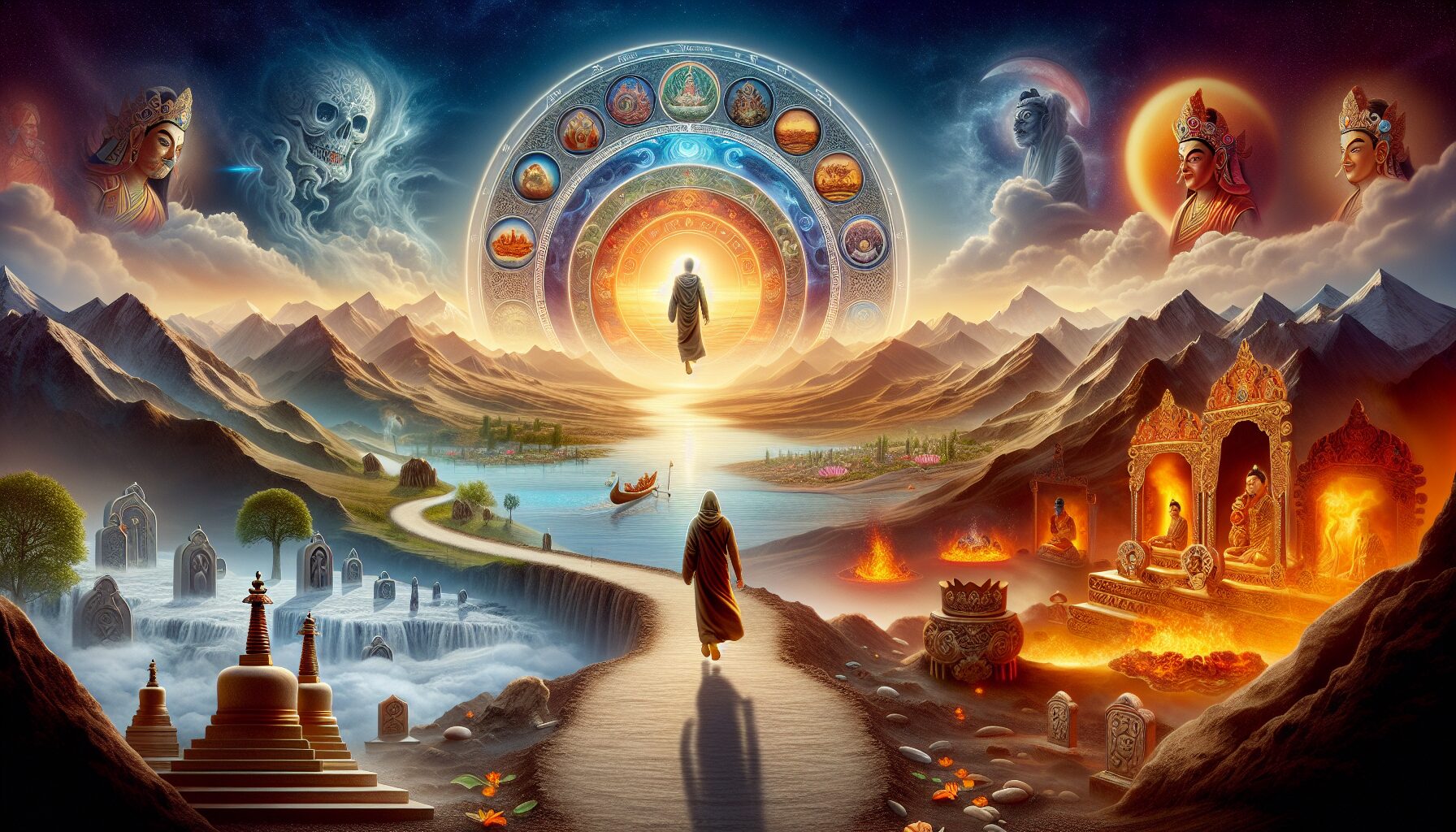Tibetan cosmology presents a richly detailed map of the afterlife, offering insights into what many believe awaits beyond death. Rooted in a fusion of Buddhist teachings and ancient Bon traditions, this view is closely tied to the essential aspects of Tibetan spiritual philosophy.
The Bardo States
Central to Tibetan beliefs about the afterlife is the concept of the bardo. The term “bardo” translates to “in-between state” and refers to the transitional phases a soul undergoes from the moment of death until rebirth. There are traditionally three major bardo states described in the Bardo Thodol, or “The Tibetan Book of the Dead”:
- Chikhai Bardo: The moment of death, where the individual experiences the “Clear Light of Reality.” This is a moment of profound opportunity, where the soul can recognize the true nature of the mind.
- Chonyid Bardo: Following the initial moment of death, the soul encounters various manifestations stemming from its own mind. These visions can range from peaceful to wrathful and are believed to provide insight into one’s karma.
- Sipa Bardo: The phase leading to rebirth. Here, based on accumulated karma and clarity of awareness, the soul is guided towards its next incarnation.
Karma and Rebirth
The Tibetan understanding of the afterlife is deeply interwoven with the concept of karma. As the Dalai Lama explains, “From the Buddhist perspective, the ideas of karma and rebirth form a natural extension of the evolutionary process” (Dalai Lama’s Messages).
Each action performed in life—whether thought, word, or deed—imprints a karmic residue that influences the soul’s journey within the bardo states. Hence, one’s conduct can critically impact the conditions of rebirth, potentially leading a soul toward a higher or lower existence in its next life.
Practical Applications
The Tibetan approaches to death and dying are not merely theoretical. They offer practical paths for preparation and assistance for those facing death. Meditative practices, such as phowa (transference of consciousness), are employed to secure a more favorable rebirth by directing the mind’s attention at crucial moments.
Conclusion
The Tibetan cosmology of the afterlife provides a profound and structured vision of post-mortem existence that emphasizes personal responsibility and the potential for spiritual evolution. By understanding these processes, individuals can engage more mindfully with life, cultivating the positive conditions necessary for an auspicious continuation beyond this existence.
“Understanding the bardo states can help us become less fearful of death and more mindful of how we live.” — Tricycle Magazine

Comments